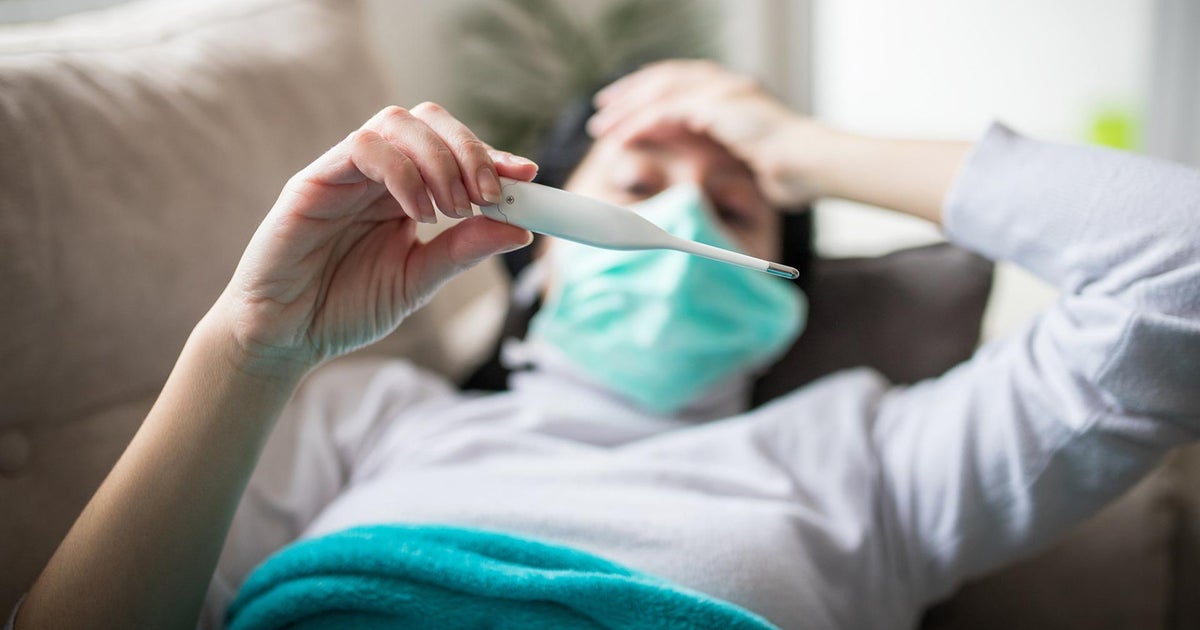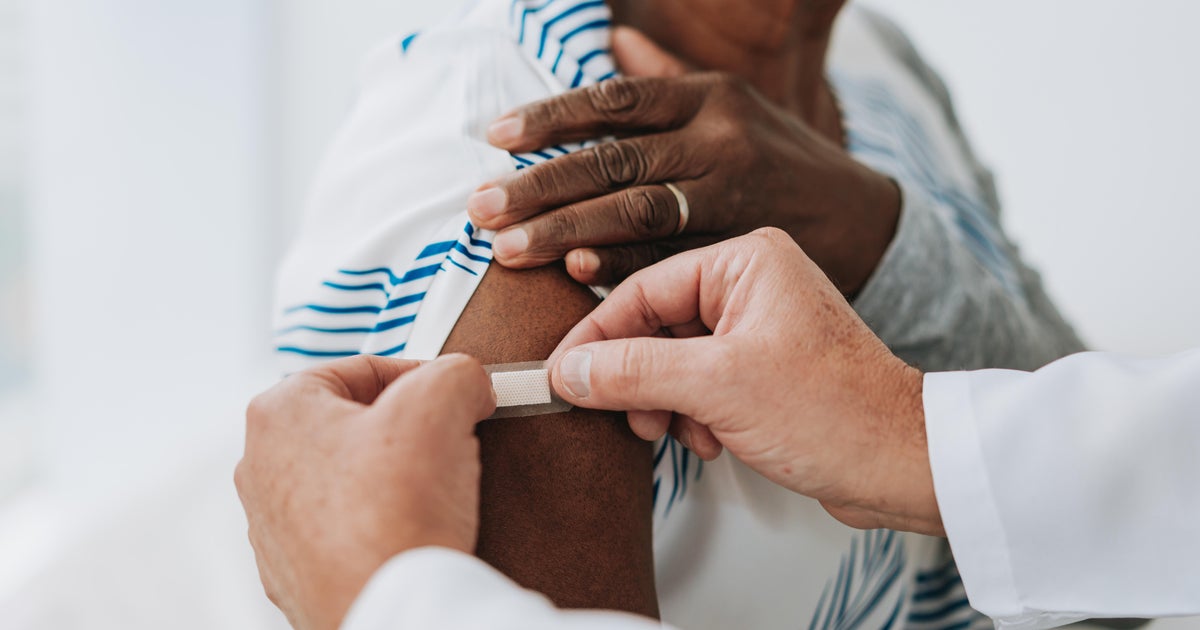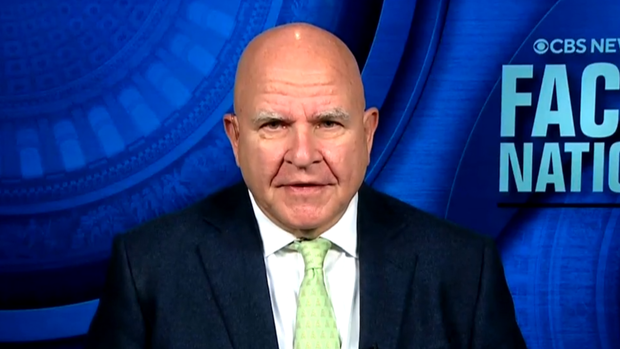CBS News
Indoor air systems crucial to curbing spread of viruses, aerosol researchers say

This is an updated version of a story first published on Oct. 29, 2023. The original video can be viewed here.
With new strains of COVID continuing to appear, and flu season just months away, we thought now is a good time to consider what the pandemic has taught us about preventing the spread of potentially deadly respiratory infections.
It turns out, viruses like the one that causes COVID-19 can travel much farther than six feet. So public health advice focusing on social distancing, handwashing, and masking wasn’t enough. Air quality scientists say, from the start of the pandemic, it also should have focused on improving the air we all breathe … indoors.
As we first reported last fall, some companies are now doing just that – for the health of their workers and the health of their bottom line.
Joe Allen: The original sin of the pandemic was the failure to recognize airborne transmission.
Professor Joe Allen of Harvard’s T.H. Chan School of Public Health believes the rapid spread of COVID in early 2020 was preventable.
Joe Allen: Think about the public health gains we’ve made over the past hundred years. We’ve made improvements to water quality, outdoor air pollution, our food safety, we’ve made improvements to sanitation: absolute basics of public health. Where has indoor air been in that conversation? It’s totally forgotten about. And the pandemic showed what a glaring mistake that was.
60 Minutes
Dr. Jon LaPook: What do you think was lost because of that lag in understanding of how this was spread?
Joe Allen: Tens of thousands of lives in the U.S., many more globally. It’s not an exaggeration.
It’s also no exaggeration to say those early days of COVID were unforgettable. In the U.S. by March 2020, the virus began taking its toll in places like the Life Care Center nursing home in Kirkland, Washington. Sixty miles away in Mount Vernon, Washington, the Skagit Valley Chorale held one of its weekly rehearsals in a church. Half the members stayed away. But the other half showed up. Among them were board members Debbie Amos, Mark and Ruth Backlund, and Coizie Bettinger.
Coizie Bettinger: We just thought hand sanitizer, wash your hands a lot, you know, don’t hug each other, ’cause that’s touch.
None of it was good enough. Within a few days, chorale members began to get sick. In all, COVID hit 53 of the 61 people there that night. Two of them, both in their 80s, died.
Ruth Backlund: We were going, “This– this has got to be spread some other way.” It–
Dr. Jon LaPook: Really?
Ruth Backlund: Because we were good. We were good.
Dr. Jon LaPook: So COVID was percolating and you thought you were doing everything you were supposed to do?
Marck Backlund: Yes.
Debbie Amos: Right.
60 Minutes
Skagit County health officials said the rehearsal “could be considered a superspreading event” – one of the earliest in the country – and concluded that choir members had “an intense and prolonged exposure” to surfaces, droplets and possibly even microscopic airborne particles called “aerosols,” containing the virus. That caught the attention of Linsey Marr, a Virginia Tech university professor specializing in aerosol science, and several of her fellow researchers. Even though the medical community was focused on droplets, surfaces and handwashing, these researchers strongly believed COVID was mostly an airborne disease, but needed more proof. So they launched their own analysis.
Linsey Marr: I thought, “Wow. This is even worse than I thought “This has to be airborne. There’s really no other explanation for it.” Some people are gonna say, “Oh, they all touched the same doorknob.” But, after the first few people touch that doorknob, there’s no more virus left.
Linsey Marr: That’s what happens with our exhaled breath.
Professor Marr used a portable fogger to help explain how so many choir members could have gotten sick.
Linsey Marr: When they’re singing, they are releasing virus particles into the air constantly, probably, like this. And those are going to drift around in the room. Notice they’re not just falling to the ground. And now as we continue to sing, there’s more and more of them in the room. And you can see, as they’re drifting around they’re reaching these other people nearby. And they were there for two and a half hours. And you can imagine that after that amount of time the other people would’ve breathed in enough of them to get sick themselves.
Dr. Jon LaPook: Especially if at night the HVAC system was turned off.
Linsey Marr: As far as we know, it wasn’t running and so there were very – there was very poor ventilation in that room when this was all happening.
An HVAC unit, short for heating, ventilation and air conditioning, is the heart and lungs of any building. The researchers suspected the thermostat most likely shut off the HVAC unit because the chorale members were generating enough heat on their own.
Dr. Jon LaPook: And right now, there’s no ventilation?
Linsey Marr: Very, very low.
Dr. Jon LaPook: OK.
Linsey Marr: And actually, it’s similar to what was in the church where the group was rehearsing.
Then, Professor Marr turned up the circulation to show us how better air flow could have helped remove aerosols and slow the spread of virus.
60 Minutes
Linsey Marr: Instead of just drifting all over the room —
Dr. Jon LaPook: Oh…
Linsey Marr: You can actually see it, right, going up through there–
Dr. Jon LaPook: I sure can. That is dramatic to see that.
The analysis led to one of the most significant papers on the importance of ventilation published during the pandemic. Then, in 2022, a study in Italy went further. It found that by using a school’s fans and air ducts to mechanically exchange indoor air with outdoor air five times an hour, the risk of COVID-19 infections decreased by at least 80 percent. But, in the U.S. it took until May of 2023 for the CDC to recommend an air exchange rate at all.
Joe Allen: If you look at the way we design and operate buildings, and I mean offices, schools, local coffee shop, we haven’t designed for health. We have bare minimum standards. In schools the minimum air change, by design, is about three air changes per hour. Remember, we want at least four to six.
Dr. Jon LaPook: If we’d had these indoor air quality targets before the pandemic, how do you think the pandemic would have unfolded differently?
Joe Allen: We still would have had spread. This isn’t an “end-the-pandemic” thing. We would have had a lot less of it, and we would have a lot less of these superspreading events. Think about the early days of the pandemic, with “flatten the curve”—“stay home.” Why wasn’t “Improve indoor air quality” part of “flatten the curve”? We had tools to protect ourselves. Masking: great tool, it’s a filter. But we ignored the building side of this.
Buildings are Allen’s business. As the founder of Harvard’s Healthy Buildings program, he diagnoses problems in air quality systems and comes up with solutions for clients that include CBS’s parent company, Paramount, and commercial real-estate companies like Beacon Capital Partners, with buildings like this one in downtown Boston. And, he advised Amazon before these new 22-story towers opened last year in Arlington, Virginia, where he gave us a tour.
Dr. Jon LaPook: What does a state-of-the-art building look like in terms of air?
Joe Allen: We see a lot of the elements in this building. You have a dedicated outdoor air system that’s delivering air above the minimum requirements. Then it’s going through two MERV-13 filter banks, and you have highly filtered air.
MERV stands for minimum efficiency reporting value. A rating of 13 means it catches up to 90 percent of airborne particles… depending on their size… as the first line of defense not just against COVID, but other airborne respiratory viruses like flu and RSV.
60 Minutes
Joe Allen: This is the part of the building nobody ever sees. But this determines whether or not you’re healthy or sick in the building, really, what happens in this space.
At Amazon’s new offices, the top floor is a maze of motors, pipes, and air ducts… part of a $2.5 million HVAC system that begins with massive rooftop vents and dampers.
Joe Allen: Right here, this is the whole air handling system. This is where the air comes into the building, it’s filtered, it’s cooled, and then delivered. This determines how much air actually reaches the office space where people are working, and how clean that air is.
Downstairs, each floor has a sensor that tells building engineers about the quality of the indoor air … such as levels of carbon dioxide, known as CO2.
Dr. Jon LaPook: We breathe out the carbon dioxide.
Joe Allen: That’s right
Dr. Jon LaPook: The less carbon dioxide, the better the ventilation?
Joe Allen: Really straightforward. High carbon dioxide means you’re not getting enough outdoor air from that system we just looked at. If it’s low, you’re in good shape. Then we also measure particles. That tells us things about, like, outdoor air pollution.
The entire system can be monitored and controlled from the basement.
Joe Allen: Remember we talked about carbon dioxide is an indicator for ventilation? Well, I can see in this building all of these are under 800 parts per million.
Dr. Jon LaPook: So that’s good?
Joe Allen: That’s great. And really important: if a lot of people went into a space, the CO2 level would rise, this system would recognize it. The dampers would open up and bring in a lot more outdoor air.
Katie Hughes, Amazon’s director of health and safety, pointed to the waves of wildfire smoke that have swept down from Canada as the ultimate test of the indoor air quality system.
Dr. Jon LaPook: Not too long ago, Washington and Virginia were sort of smothered by this smoke coming down from Canada. What happened in this building?
Katie Hughes: You would expect the air quality within the facility to not be great. Our buildings were performing very well.
Amazon says it has updated and continues to monitor its HVAC systems…including in its warehouses.
A recent survey of facility managers in the U.S. and Canada found that since March 2020, roughly two-thirds of respondents have upgraded their MERV filters and increased their air exchange rates. In New York City, JPMorgan Chase says its new headquarters will have state of the art air quality controls. And this new skyscraper called 1 Vanderbilt already runs a modern HVAC system.
Katie Hughes: COVID shifted everybody’s mindset in terms of air quality in terms of communicable or infectious diseases.
Dr. Jon LaPook: Are you finding that Amazon is making a business decision partially by saying, “Look, it’s okay for you to come back to work, because we’re telling you that the air inside this building is safe”?
Katie Hughes: I think it’s one of many reasons why we expect or would like people back in the office. That is– a good thing to have, it’s probably one of many things.
A well-operating HVAC system is not only good for the health of employees. It can be good for the health of companies, too, especially with people working remotely, leaving many commercial building owners looking for tenants.
Dr. Jon LaPook: There’s empty office space, in New York City and elsewhere. How do you think this new thinking might affect that in terms of people even wanting to come to work?
Joe Allen: The dynamic has changed: It’s a total buyers’ or tenants’ market. All else equal, which building are you gonna go to? You have your choice right now: This building that put in healthy building controls, or this building that’s designed the way we’ve always designed buildings, and is prone to being a sick building?
Dr. Jon LaPook: So it actually can help the bottom line in addition to, of course, improving health?
Joe Allen: Yeah.
Dr. Jon LaPook: What about retrofitting a building that’s old?
Joe Allen: I think it’s a misconception that old buildings can’t be healthy buildings. Some of these fixes don’t take much. Improving the level of filtration? That’s easy; it’s cheap; protects against COVID-19; influenza; also protects against wildfire smoke and outdoor air pollution; protects against allergens. Simple, absolute basic things that can be done.
60 Minutes
The Skagit Valley Chorale rehearsals are now in a different church with a new HVAC system. For the last year, doors were left open to let in fresh air, regardless of the season, and there are even portable carbon dioxide monitors to track ventilation.
Debbie Amos: We’ve been through a traumatic experience. And we’ve tried to learn from that. And did help the science with the aerosol study. And now, we’re moving on in a way that we can still sing– but in a more safe manner.
Dr. Jon LaPook: Do you worry that when the spotlight of the pandemic starts to fade, that people will forget and that they won’t act the way they should, in terms of buildings?
Joe Allen: I’m a bit more optimistic than that. I think there are fundamental shifts that have happened. The scientific and medical literature’s being rewritten. The government and standard setting bodies are setting new health-based standards. Businesses are responding and won’t forget what this meant to their employees’ health, and their business. So I don’t think we’re gonna forget these lessons. We better not.
Produced by Andrew Wolff. Associate producer, Tadd J. Lascari. Broadcast associate, Eliza Costas. Edited by Matt Richman.
CBS News
Former Israeli hostages released in truce 1 year ago call for action to release those still held

Former Israeli hostages who were freed from Hamas captivity during a week-long humanitarian pause in fighting exactly one year ago Sunday called for immediate action to secure a deal for the release of those still held.
The only truce in the ongoing Israel-Hamas war on Nov. 24, 2023 – fewer than two months after fighting began – led to the release of 80 Israelis held by militants in Gaza. They were freed in exchange for 240 Palestinians detained in Israeli jails.
Repeated efforts since then by mediators from Qatar, Egypt and the United States to secure another truce and hostage release have failed. Qatar early this month said it was suspending its mediation role until the warring sides show “seriousness.”
Mostafa Alkharouf/Anadolu via Getty Images
Gabriella Leimberg was kidnapped during the Oct. 7, 2023, Hamas attack and was released along with her daughter, Mia, and sister Clara.
“For 53 days, the one thing that kept me going is that we, the people of Israel, the Jewish people, sanctify life — we don’t leave anyone behind,” she said.
Leimberg added: “Everything has already been said and now action is required. We don’t have any more time.”
Around 100 hostages are still in Gaza, and at least a third are believed to be dead.
“I survived and I was fortunate to get my entire family back,” Leimberg said. “I want and demand this for all the families of the hostages.”
Hamas wants Israel to end the war and withdraw all troops from Gaza. Israel has offered only to pause its offensive.
The Palestinian death toll from the war surpassed 44,000 this week, according to Gaza’s Health Ministry, which does not distinguish between civilians and combatants in its count.
Maya Alleruzzo / AP
Danielle Aloni, who was kidnapped with her five-year-old daughter, Emelia, and freed after 49 days, spoke at the ceremony of the “increasing danger” those still being held face every day.
She said those still in captivity “suffer physical, sexual, and psychological abuse, their identity and dignity crushed anew each day”.
“It took the Israeli government about two months to secure a deal for me and 80 other Israeli hostages. Why is it taking over a year to reach another deal to free them from this hell?” asked Aloni, whose brother-in-law, David Cunio, and his brother, Ariel Cunio, are still being held.
She emphasized that, even though she and the other hostages gained their freedom a year ago, “we haven’t really left the tunnels,” — referring to Hamas’ underground tunnels where many of the hostages were held.
“The feeling of suffocation, the terrible humidity, the stench — these sensations still envelop us,” Aloni said.
“If people could truly understand what it means to be held in subhuman conditions in tunnels, surrounded by terrorists for 54 days — there’s no way they would allow hostages to remain there for 415 days!” said Raz Ben Ami, who was released in the deal a year ago.
Her husband, Ohad, is still among those being held.
Ben Ami called for a ceasefire to “bring back all the hostages as quickly as possible”.
CBS News
Couple charged for allegedly stealing $1 million from Lululemon in convoluted retail theft scheme

A couple from Connecticut faces charges for allegedly taking part in an intricate retail theft operation targeting the apparel company Lululemon that may have amounted to $1 million worth of stolen items, according to a criminal complaint.
The couple, Jadion Anthony Richards, 44, and Akwele Nickeisha Lawes-Richards, 45, were arrested Nov. 14 in Woodbury, Minnesota, a suburb of Minneapolis-St. Paul. Richards and Lawes-Richards have been charged with one count each of organized retail theft, which is a felony, the Ramsey County Attorney’s Office said. They are from Danbury, Connecticut.
The alleged operation impacted Lululemon stores in multiple states, including Minnesota.
“Because of the outstanding work of the Roseville Police investigators — including their new Retail Crime Unit — as well as other law enforcement agencies, these individuals accused of this massive retail theft operation have been caught,” a spokesperson for the attorney’s office said in a statement on Nov. 18. “We will do everything in our power to hold these defendants accountable and continue to work with our law enforcement partners and retail merchants to put a stop to retail theft in our community.”
Both Richards and Lawes-Richards have posted bond as of Sunday and agreed to the terms of a court-ordered conditional release, according to the county attorney. For Richards, the court had set bail at $100,000 with conditional release, including weekly check-ins, or $600,000 with unconditional release. For Lawes-Richards, bail was set at $30,000 with conditional release and weekly check-ins or $200,000 with unconditional release. They are scheduled to appear again in court Dec. 16.
Prosecutors had asked for $1 million bond to be placed on each half of the couple, the attorney’s office said.
Richards and Lawes-Richards are accused by authorities of orchestrating a convoluted retail theft scheme that dates back to at least September. Their joint arrests came one day after the couple allegedly set off store alarms while trying to leave a Lululemon in Roseville, Minnesota, and an organized retail crime investigator, identified in charging documents by the initials R.P., recognized them.
The couple were allowed to leave the Roseville store. But the investigator later told an officer who responded to the incident that Richards and Lawes-Richards were seasoned shoplifters, who apparently stole close to $5,000 worth of Lululemon items just that day and were potentially “responsible for hundreds of thousands of dollars in loss to the store across the country,” according to the complaint. That number was eventually estimated by an investigator for the brand to be even higher, with the criminal complaint placing it at as much as $1 million.
Richards and Lawes-Richards allegedly involved other individuals in their shoplifting pursuits, but none were identified by name in the complaint. Authorities said they were able to successfully pull off the thefts by distracting store employees and later committing fraudulent returns with the stolen items at different Lululemon stores.
“Between October 29, 2024 and October 30, 2024, RP documented eight theft incidents in Colorado involving Richards and Lawes-Richards and an unidentified woman,” authorities wrote in the complaint, describing an example of how the operation would allegedly unfold.
“The group worked together using specific organized retail crime tactics such as blocking and distraction of associates to commit large thefts,” the complaint said. “They selected coats and jackets and held them up as if they were looking at them in a manner that blocked the view of staff and other guests while they selected and concealed items. They removed security sensors using a tool of some sort at multiple stores.”
CBS News contacted Lululemon for comment but did not receive an immediate reply.
CBS News
Former Trump national security adviser says next couple months are “really critical” for Ukraine

Washington — Lt. Gen. H.R. McMaster, a former national security adviser to Donald Trump, said Sunday that the upcoming months will be “really critical” in determining the “next phase” of the war in Ukraine as the president-elect is expected to work to force a negotiated settlement when he enters office.
McMaster, a CBS News contributor, said on “Face the Nation with Margaret Brennan” that Russia and Ukraine are both incentivized to make “as many gains on the battlefield as they can before the new Trump administration comes in” as the two countries seek leverage in negotiations.
With an eye toward strengthening Ukraine’s standing before President-elect Donald Trump returns to office in the new year, the Biden administration agreed in recent days to provide anti-personnel land mines for use, while lifting restrictions on Ukraine’s use of U.S.-made longer range missiles to strike within Russian territory. The moves come as Ukraine marked more than 1,000 days since Russia’s invasion in February 2022.
Meanwhile, many of Trump’s key selection for top posts in his administration — Rep. Mike Waltz for national security adviser and Sens. Marco Rubio for secretary of state and JD Vance for Vice President — haven’t been supportive of providing continued assistance to Ukraine, or have advocated for a negotiated end to the war.
CBS News
McMaster said the dynamic is “a real problem” and delivers a “psychological blow to the Ukrainians.”
“Ukrainians are struggling to generate the manpower that they need and to sustain their defensive efforts, and it’s important that they get the weapons they need and the training that they need, but also they have to have the confidence that they can prevail,” he said. “And any sort of messages that we might reduce our aid are quite damaging to them from a moral perspective.”
McMaster said he’s hopeful that Trump’s picks, and the president-elect himself, will “begin to see the quite obvious connections between the war in Ukraine and this axis of aggressors that are doing everything they can to tear down the existing international order.” He cited the North Korean soldiers fighting on European soil in the first major war in Europe since World War II, the efforts China is taking to “sustain Russia’s war-making machine,” and the drones and missiles Iran has provided as part of the broader picture.
“So I think what’s happened is so many people have taken such a myopic view of Ukraine, and they’ve misunderstood Putin’s intentions and how consequential the war is to our interests across the world,” McMaster said.
On Trump’s selections for top national security and defense posts, McMaster stressed the importance of the Senate’s advice and consent role in making sure “the best people are in those positions.”
McMaster outlined that based on his experience, Trump listens to advice and learns from those around him. And he argued that the nominees for director of national intelligence and defense secretary should be asked key questions like how they will “reconcile peace through strength,” and what they think “motivates, drives and constrains” Russian President Vladimir Putin.
Trump has tapped former Rep. Tulsi Gabbard to be director of national intelligence, who has been criticized for her views on Russia and other U.S. adversaries. McMaster said Sunday that Gabbard has a “fundamental misunderstanding” about what motivates Putin.
More broadly, McMaster said he “can’t understand” the Republicans who “tend to parrot Vladimir Putin’s talking points,” saying “they’ve got to disabuse themselves of this strange affection for Vladimir Putin.”
Meanwhile, when asked about Trump’s recent selection of Sebastian Gorka as senior director for counterterrorism and deputy assistant to the president, McMaster said he doesn’t think Gorka is a good person to advise the president-elect on national security. But he noted that “the president, others who are working with him, will probably determine that pretty quickly.”















